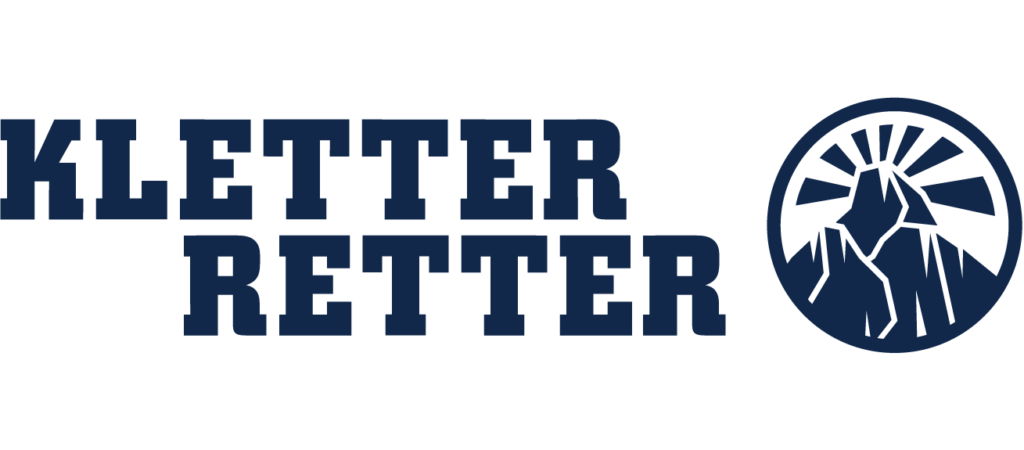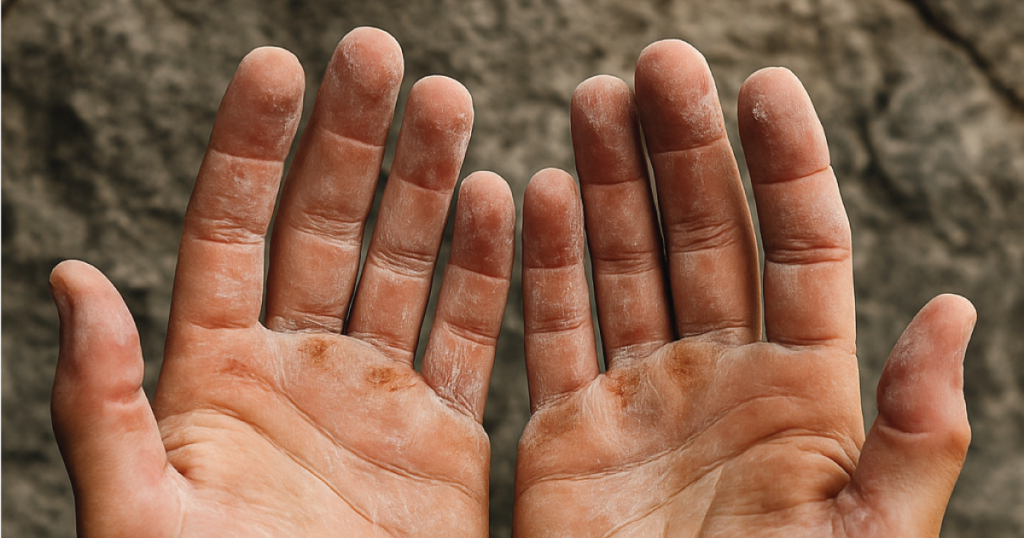Expert Blog
Common climbing skin problems (part 1/3)
This article is part of a three-part series on climbing skin care. In part 1, we cover common injuries and immediate first aid.
Common skin problems
Every climber’s hand tells a story. Flappers, splits, calluses, sweaty palms are all part of the story. But with the right knowledge and tools, you can prevent most problems and recover faster when they do happen.
Different types of climbing related skin injuries affect different layers of your skin:
- A mild abrasion affects the outer layer of the epidermis, the stratum corneum
- Calluses are caused by the thickening outer layer of the epidermis, the stratum corneum
- A pinched skin injury often shears or crushes deeper layers of the epidermis (stratum granulosum and the stratum spinosum), exposing nerve endings and creating that raw, glassy, stinging sensation.
- A flapper usually rips through the entire epidermis. If blood is visible, you’ve likely reached the dermis.
Calluses
What is a callus? Thickened areas of skin that form on the outer layer of your skin (epidermis/stratum corneum) in response to pressure and friction.
Good or bad? Both. Calluses protect the middle layer of skin (dermis), but too much build-up can lead to flappers or tears.
Caring for calluses:
- Use a skin file and apply KletterRetter Repair Balsam or use a KletterRetter Skindisc/ Beedisc to gently reduce thick or uneven calluses
- Moisturize regularly with KletterRetter hand cream to keep the skin flexible
- Never file fresh skin or file calluses completely. The goal is to leave a protective layer.
Pinched skin
What is pinched skin? A type of compression and shear trauma that damages the deeper layers of the epidermis (stratum granulosum and stratum spinosum).
The outermost skin layer (stratum corneum) often remains intact, so there’s usually no bleeding, but the area may appear raw, shiny, or glassy. These injuries can feel surprisingly deep and take several days to heal.
Causes: Pinched skin injuries occur when friction and pressure combine under tension, for example, during dynamic moves, slips on slopers, or hard contact with textured holds. These injuries often show up in the same places as calluses on the finger pads or the top of the palm, and can extend deeper than a typical flapper.
Pinched skin first aid
- Clean the area gently with water or antiseptic
- Apply a wound-healing balm like KletterRetter Repair Balsam or Skindisc/Beedisc
- Cover with breathable tape, a non-stick wound pad or at the very least with a makeshift tape pad
- Avoid climbing for at least 24–48 hours, or until the raw surface begins to close
When to rest
Pinched skin wounds are prone to tearing open, especially if they extend into the lower epidermis. Climbing too soon may delay healing or increase the risk of secondary injury or infection. Allow time for the skin to rebuild and form a new protective barrier.
Flappers
What is a flapper? A flap of skin lifted or completely torn off, typically on your finger or palm.
Causes: Flappers are often caused from thick callus catching on a hold, sharp contact while climbing, or shearing where the top and middle layer of skin move in opposite directions.
Flapper first aid
- Clean the area with water or antiseptic (be careful because it might sting)
- Trim any loose skin, but only remove the flapper if it’s already mostly detached
- Apply KletterRetter Repair Balsam and cover the wound with tape or a wound pad
- Avoid climbing on it the next day to allow healing to begin
Taping a finger flapper
The most effective way to tape a flapper is with a protective tape ring that secures the wound without limiting movement:
- Tear off a 10 cm strip of finger tape slightly wider than the wound
- Fold one end so the adhesive sides touch, creating a clean wound pad
- Position the non-adhesive side of the pad over the raw skin, leaving the flap in place if it still offers cushioning
- Wrap the remainder of the tape smoothly around the finger to secure the pad in place. Avoid overtightening to preserve circulation.
Taping a palm flapper
For larger flappers on your palm, you can use the following method:
- Clean and dry your hands thoroughly, including your wrist and the back of your hand
- Tear a 15mm wide strip of tape, about as long as the distance between your fingertip and your elbow.
- Place the middle of the tape behind the base knuckle of the injured finger so both ends run diagonally across your palm
- Make a folded wound pad out of another short piece of tape and place it in the center over the flapper
- Extend the tape over the back of your hand, toward your wrist and secure both ends on your wrist. You can add another loose loop of tape around your wrist to keep it in place.
Split fingertips
What are split fingertips? Vertical or horizontal cracks in the skin on the tips of your fingers.
Causes: Dry, brittle skin combined with pressure and friction. Common in winter, cold conditions or after lots of board training.
Caring for split fingertips:
- Use KletterRetter Repair Balsam morning and night to speed up healing
- File the edges of the split flat to avoid deeper tearing
- Tape over the split if climbing can’t wait. Keep the skin clean and avoid chalk contact on open wounds where possible.
Grazes, abrasions, and cuts
What are grazes, abrasions and cuts? Surface wounds caused by friction, sharp holds or textured walls.
These types of skin wounds can quickly become infected and take longer to heal if they are not treated properly. Always carry a first aid kit with you, so you can act quickly and shorten unnecessarily long recovery periods.
Care:
- Treat any bleeding and gently clean the wound as soon as possible
- Apply KletterRetter Repair Balsam
- Cover the wound it it is exposed to chalk or dirt
- Use a first aid kit at the crag for on-the-spot treatment and remember to refill anything you might have used



